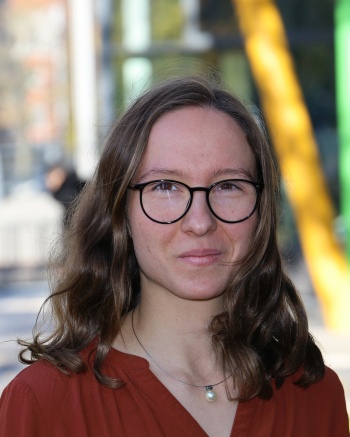Mascha Niemeyer

M.Sc. Mascha Niemeyer
Mehrkörperdynamik (IWTM)
Current projects
Integration of physically motivated material models for filled elastomers in multi-body simulations of highly dynamic systems
Duration: 01.05.2024 bis 30.04.2027
The DFG-funded research project aims to increase the numerical prediction capability for technical systems by implementing a holistic simulation methodology that enables efficient coupling between a multi-body simulation and a non-linear FE model. An extension of the physically motivated dynamic flocculation model is used to fully and precisely map the non-linear material behavior of elastomeric bearing elements. The focus here is primarily on the changes in the properties of the bearings under multi-axial loading, which are often neglected in current modeling approaches at . Since the integration of a detailed FE model leads to an increase in the necessary computing resources, different levels of detail of the solver coupling are implemented and analyzed in this project with the aim of allowing a reduction in computing time with an acceptable loss of accuracy. The resulting different levels of complexity of the developed methodology are comprehensively compared with conventional modeling strategies. The individual coupling strategies are evaluated with regard to the implementation and parameterization effort as well as the physical interpretability and the required computing resources. The developed and validated FE models based on the DFM are also examined with regard to their suitability, to what extent and with what reliability certain material parameters can be transferred once to other geometries and load scenarios. Finally, the accuracy of all investigated strategies for coupling the FEM and MBS is assessed with the aid of test results from real applications. The FEM is integrated into the MBS both directly via various solver couplings and indirectly by generating a characteristic map or a surrogate model with the aid of the FE model for use within the MBS. The first application example is a laboratory centrifuge, whose vibration amplitudes and operating resonances are measured and compared with the numerically obtained results of the respective coupling strategies. Furthermore, the developed methodology is applied and validated in the context of a vibration analysis of chassis components of an electric vehicle.
This text was translated with DeepL
Keine Publikation im Forschungsportal hinterlegt.
View entry in the research portal.
seit 05/2024 | Wissenschaftliche Mitarbeiterin am Institut für Werkstoffe, Technologien und Mechanik (IWTM, ehemals IFME), Lehrstühle Numerische Mechanik (Prof. Juhre) und Mehrkörperdynamik (Prof. Woschke) |
03/2024 | M.Sc.: Maschinenbau, Vertiefung: Produktentwicklung, Otto-von-Guericke-Universität Magdeburg |
10/2021 - 09/2023 | Werkstudentin für Simulation bei der WTZ Roßlau gGmbH |
04/2022 | B.Sc.: Mathematikingenieur/in, Vertiefung: Maschinenbau, Mechanik, Otto-von-Guericke-Universität Magdeburg |




